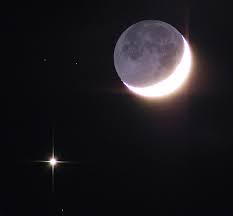by Ron-Astro Pharmacist » Thu Feb 26, 2015 6:52 pm
Indigo_Sunrise wrote:Ron-Astro Pharmacist wrote:Is it difficult to predict when Venus may occult Mars as seen from Earth? They were obviously very close February 22nd but I can't find a future prediction for another occultation of that type.
A Wiki search of "History of Mars observation" lists the below.
"On October 13, 1590, the German astronomer Michael Maestlin observed an occultation of Mars by Venus…"
From: Breyer, Stephen (March 1979). "Mutual occultation of planets". Sky and Telescope 57 (3): 220.
http://www.seasky.org/astronomy/astrono ... rrent.html
I just read an article about this very thing, (Venus occulting Mars, as seen from Earth). IIRC, it seems as though it is so infrequent, as in 'lining up' only every thousand years or so. I'll see if I can find where I was reading it.......
ETA:
From here:
An occultation involving two planets is extremely rare, however. For instance, the last time Venus occulted Mars was on October 13, 1590, and the next time will be June 4, 2327.
This image is an awesome-almost-occultation!

Thanks Indigo – it's funny that the article mentions the "dark side" of the moon; meaning the side opposite the bright crescent. Which brings up another phenomenon - that the bright crescent appears larger, out of proportion, to the rest of the moon? My wife commented on it the other night. It's more apparent "live" but some photos also seem to appear that way. Wonder why?

- Moon Crescent.jpg (2.13 KiB) Viewed 247505 times
[quote="Indigo_Sunrise"][quote="Ron-Astro Pharmacist"]Is it difficult to predict when Venus may occult Mars as seen from Earth? They were obviously very close February 22nd but I can't find a future prediction for another occultation of that type.
A Wiki search of "History of Mars observation" lists the below.
"On October 13, 1590, the German astronomer Michael Maestlin observed an occultation of Mars by Venus…"
From: Breyer, Stephen (March 1979). "Mutual occultation of planets". Sky and Telescope 57 (3): 220.
[url]http://www.seasky.org/astronomy/astronomy-calendar-current.html[/url][/quote]
I just read an article about this very thing, (Venus occulting Mars, as seen from Earth). IIRC, it seems as though it is so infrequent, as in 'lining up' only every thousand years or so. I'll see if I can find where I was reading it.......
ETA: [url=http://earthsky.org/tonight/moon-venus-and-mars-bunch-up-at-nightfall-february-20]From here:[/url]
[quote]An occultation involving two planets is extremely rare, however. For instance, the last time Venus occulted Mars was on October 13, 1590, and the next time will be June 4, 2327.
[/quote]
This image is an awesome-almost-occultation! :lol2:[/quote]
Thanks Indigo – it's funny that the article mentions the "dark side" of the moon; meaning the side opposite the bright crescent. Which brings up another phenomenon - that the bright crescent appears larger, out of proportion, to the rest of the moon? My wife commented on it the other night. It's more apparent "live" but some photos also seem to appear that way. Wonder why?
[attachment=0]Moon Crescent.jpg[/attachment]